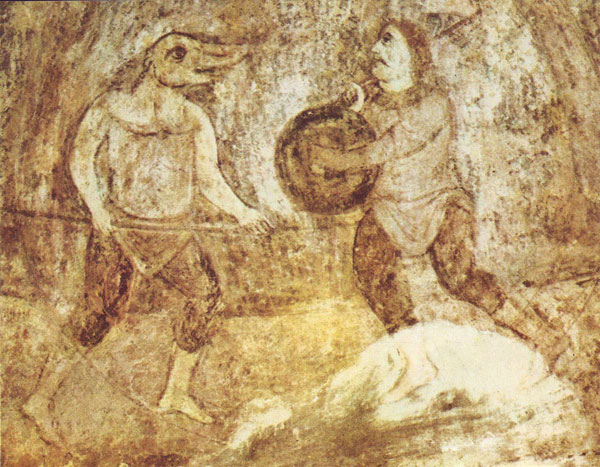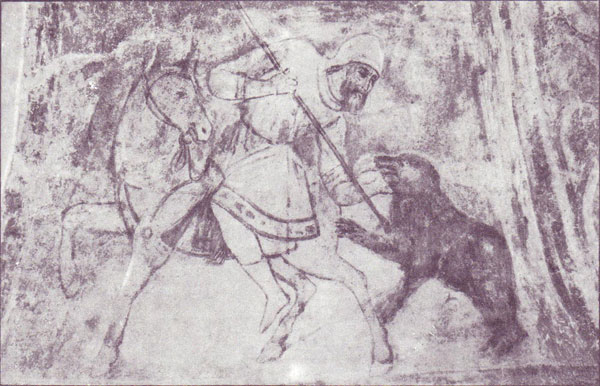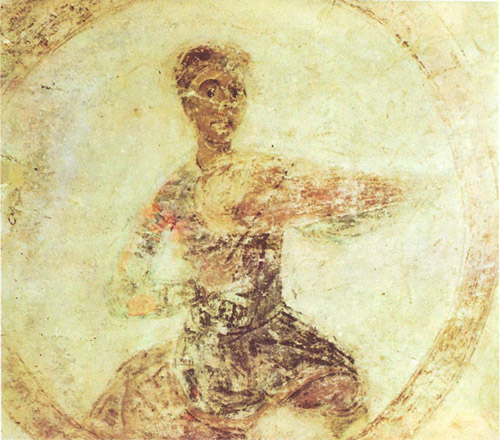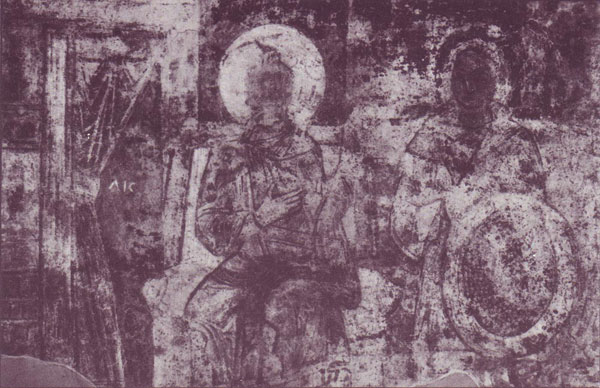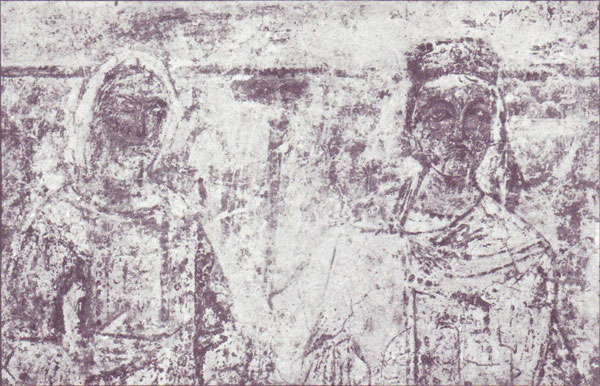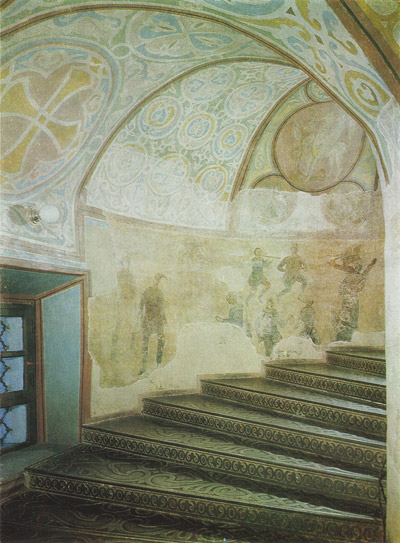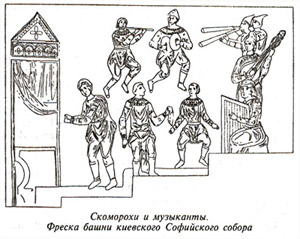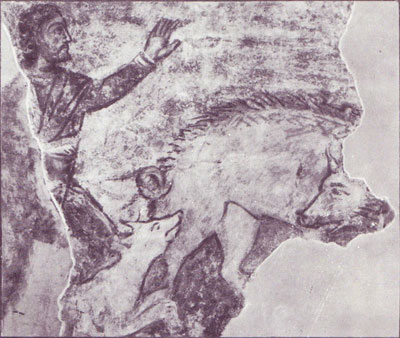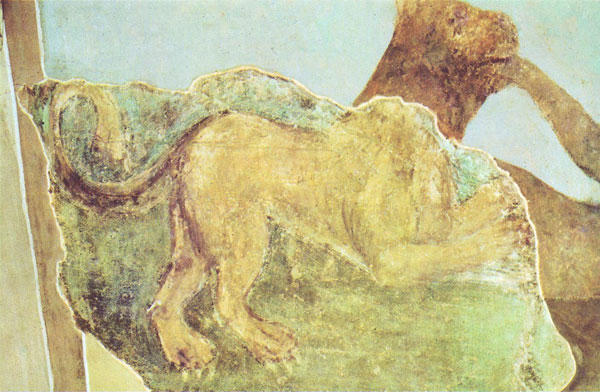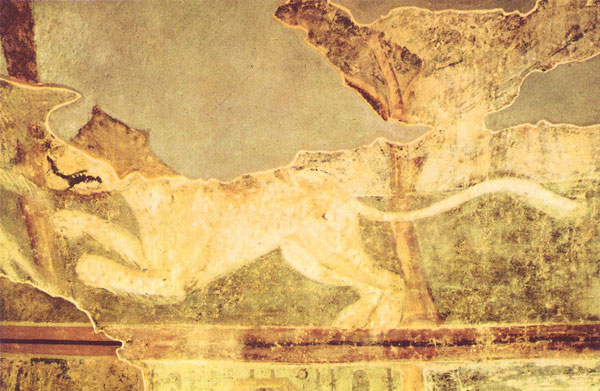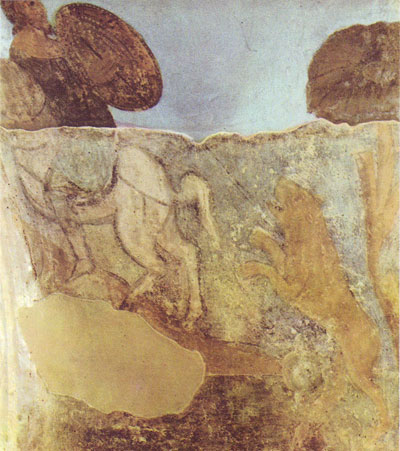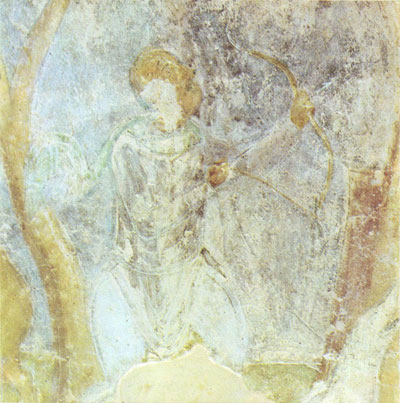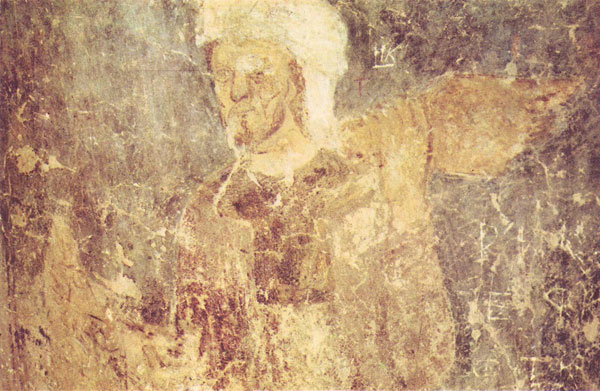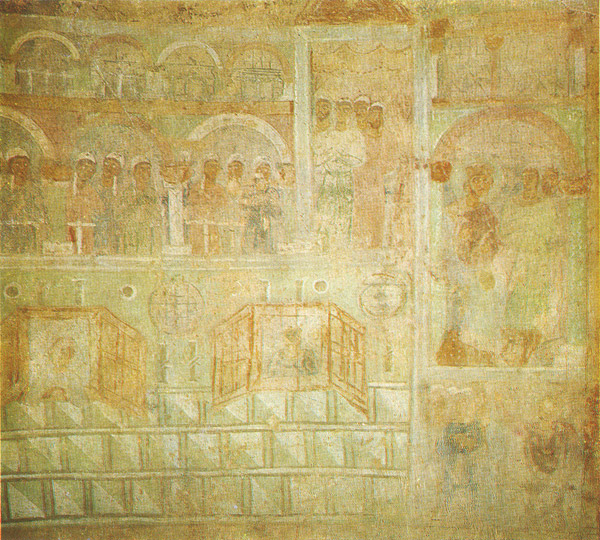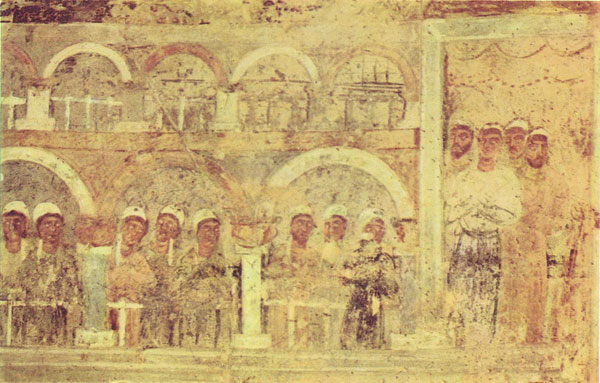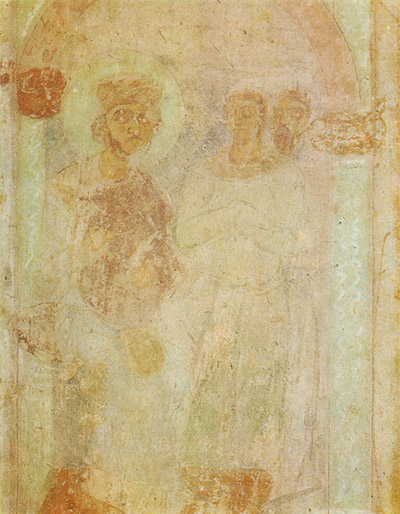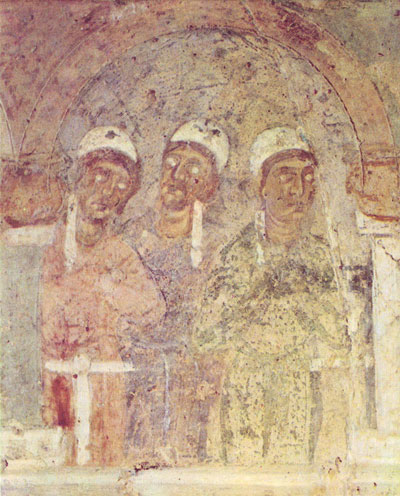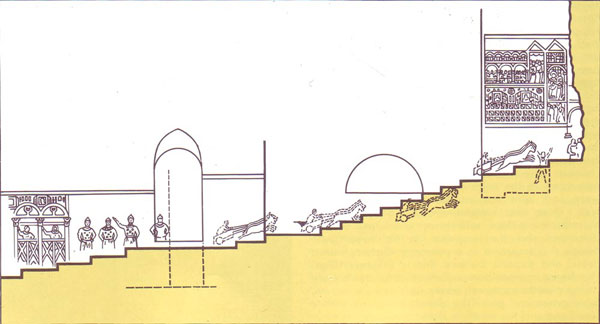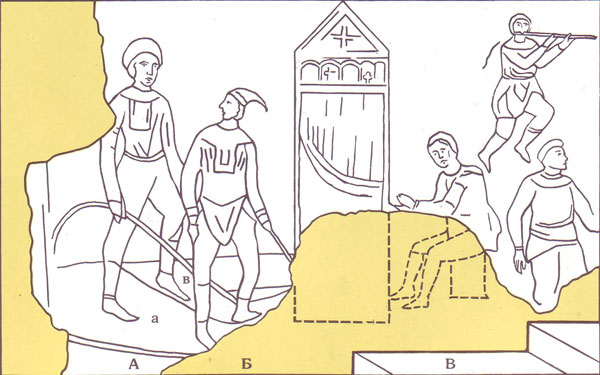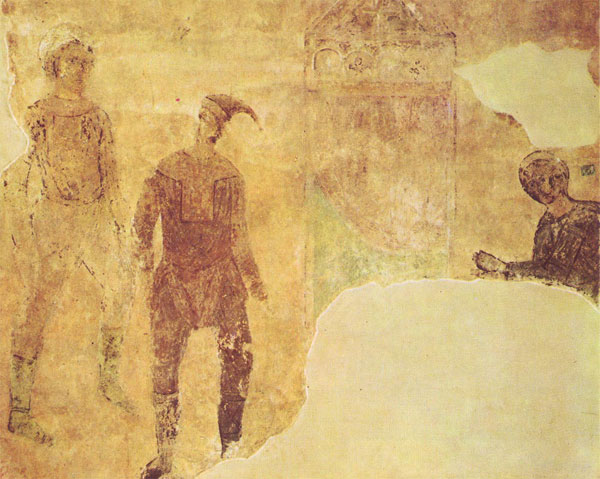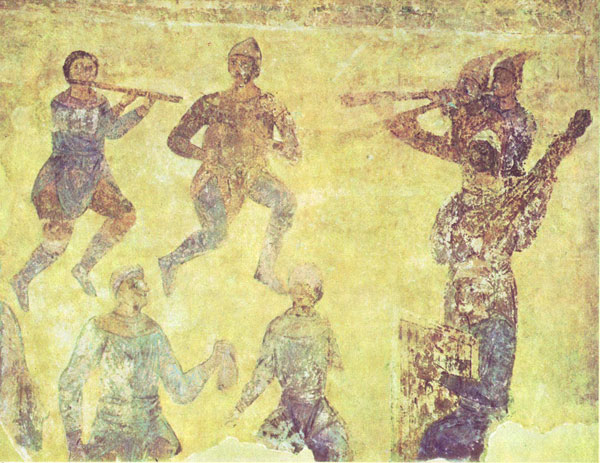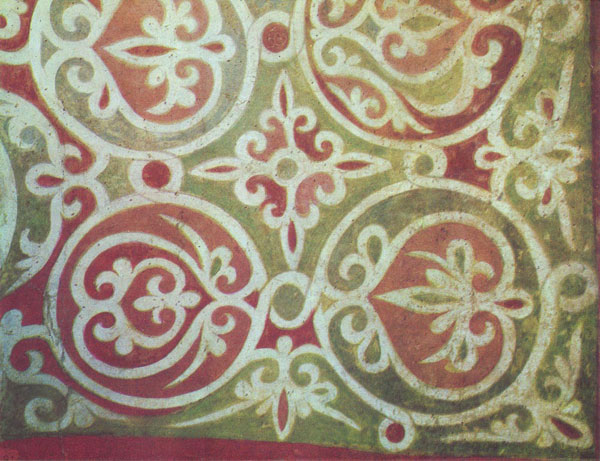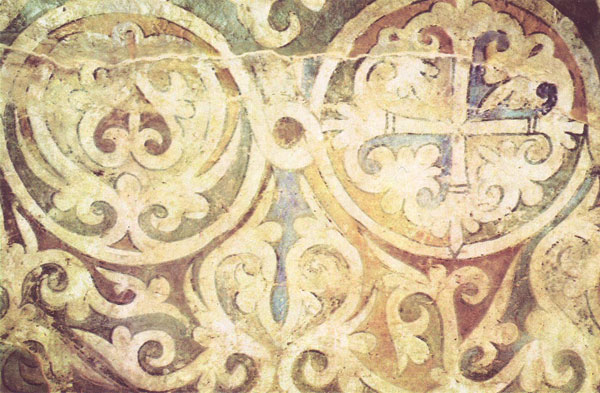ua. ru. en.
Museum ST. SOPHIA CATHEDRAL
Historical information
Plan of museum
ST. SOPHIA CATHEDRAL
Narthex
Architecture and murals
- Plan, Ground floor
- Mosaics
- Frescos
- Graffiti
- other details
Sarcophagus of Yaroslav the Wise
North cloister
Towers
Lofts
- Plan, First floor
ARCHITECTURAL MONUMENTS OF THE 18TH CENTURY
Bell Tower
Seminary
Cells of the Cathedral Elders
Metropolitan's Residence
Refectory
Consistory
South Entrance Tower
Zaborovsky Gate
First Rus library
BRANCHES OF THE MUSEUM
|
|
Excursions Kiev
weekend in Kiev
trip to Kiev
Excursions
tours to Kiev
Sights of Kiev
TOWERS
The two spiral stairway towers give entrance onto the first floor galleries or lofts. Today, the entrance to the South Tower is found at the western end of the gallery which was once the south cloister; the entrance to the North Tower is at the north end of the western inner gallery.
In olden times, the tower stairways were used by the members of the Prince's family and their retinue to reach the lofts. Then the towers had only outside entries and were completely isolated from the ground floor precincts. The North Tower entrance was from the western cloister and the South Tower entrance from the southern. However, both tower entries were closed off during the reconstructions carried out in the 17th and 18th centuries, and entrances to the tower stairways were introduced from the cathedral precincts. The walls, vaults and columns of the stairways leading to the lofts are decorated with frescos which are for the most part fairly well preserved. In their subject mater and manner of painting these frescos form a specific part of the arrangement of mural designs in the cathedral. Of a non-religious character, they depict scenes about life in imperial Constantinople and in the court of the Kievan principality, hunting and theatrical scenes, circus games, folk amusements.
According to the latest researches done by professor S. O. Visotsky, frescos of both towers are devoted to an important event in the life of Kievan Rus in the mid-10th century - meeting of Princess Olga, great-grandmother of Yaroslav the Wise, and Emperor Constantine Porphyrogenitus, which took place in Constantinople.
From the general disposition of the murals and their compositional arrangement they are apparently supposed to be viewed from below as one mounts the stairs to the lofts.
NORTH TOWER
The present entrance to the North Tower from the interior was built in the 19th century. To your right as you enter, there are doors made at the turn of the 18th century into a chamber under the staircase. The original entrance was opposite: it was glassed in, and the bevelled designs. The original slate slab forming the threshold has been preserved, as well as two steps with mosaics covering the vertical rise between the treads.
During later reconstructions, new steps were laid which did not coincide with the original design. After the architectural and archaeological researches the unique original form was restored: this consisted of steep flights of steps alternating with gently sloping ramps.
Few of the frescos on the tower's central column have survived. The stepped segments of the tower vault are embellished with elaborate ornaments, griffons and eight-armed crosses encircled like medallions.
On the arch in the lower part of the tower, right of the present entrance, a man with a camel is depicted; below, the scene of a fight where the wrestlers are dynamically entwined. Directly over the entrance is the Fighting Mummers scene which depicts one man in a monster-mask using a pitch-folk against a moustached warrior armed with axe and shield.
Fighting Mummers:
Beside it, is the Bear Hunt fresco which is full of dynamic tension: a valorous rider in helmet-shaped headgear aims his spear at the animal attacking him. The rider is richly attired in a shirt with decorative braid trim around the collar and hemline.
Bear Hunt:
There was a large composition in the lower part of the tower devoted to visit of Princess Olga to Constantinople. Only details of it have survived.
Below the Bear Hunt fresco one finds the scene Empress with Attendants, right of the ancient entrance, Romanus, son of Constantine Porphyrogenitus, is depicted on a white horse. Further up the vault are two successive medallions, each depicting an archer. Higher up we find the Musician fresco in which the minstrel is seated, playing on a stringed instrument with a bow.
Musician:
Further still, there is a drawing of a dog chasing a deer.
On the top landing, on both sides of a small window, one may see the main scene of the whole fresco - Constantine Porphyrogenitus Meets Princess Olga. Left of the window, the emperor is depicted on a throne with a nimbus around his head. Beside him are two bodyguards armed with spears and shields. Right of the window, Princess Olga is showed with a crown on her head and transparent shawl falling down her shoulders. She is accompanied by the women from her retinue.
Constantine Porphyrogenitus Meets Princess Olga. Left part of the composition:
Constantine Porphyrogenitus Meets Princess Olga. Detail of the right part of the composition:
Higher are the pictures of wild ass and white gerfalcon encircled like medallions. There is also an interesting exhibit of exposed masonry where one may see how the empty ceramic acoustic-jars were used in building the vault.
SOUTH TOWER
The present entrance to the South Tower was made at the turn of the 18th century. Here also on the south wall one may see exposed masonry indicating that once there existed an opening. The chamber under the staircase even in olden times was separated by a wall with a small doorway, forming a separate room. Here the frescos were not touched during later restorations and therefore retain their original freshness of colour till nowadays.
Interior. South tower:
The patterned ironwork steps laid in the 19th century replaced the older form of the stairs.
The lower section of the staircase has interesting frescos depicting hunting scenes. On the wall near the present entrance is the Wild Boar Hunt. The wounded boar with raised bristles along the spine and his head sharply turned towards the hunter is very graphically depicted. On the vault here is a scene showing a wild-horse hunt with cheetahs. Opposite, on the column supporting the tower, one sees a Squirrel Hun t and A Vicious Animal Attacking a Horseman. They are not fully preserved as frescos and the missing parts were added in oils during the 19th century. Higher on the column a man is depicted carrying a boar's head and the ham.
Wild Boar Hunt:
Lion:
Cheetah:
A Vicious Animal Attacking a Horseman:
Squirrel Hunt. Detail:
Man Carrying a Boar's Head:
One of the largest fresco compositions in the south tower is The Hippodrome. It relates to the second meeting between Princess Olga and the Emperor Constantine Porphyrogenitus during the chariot races held at the Constantinople hippodrome. This fresco is made up of several scenes, one above the other on the tower wall. Only fragments have survived: part was destroyed, part was covered by a supporting wall added to reinforce the vault in the 18th century. However, research led to a graphic reconstruction of the Hippodrome composition. On the wall in the lower part of the tower, betwenn the closed-in old entrance and a window, there is still a partly preserved portrayal of the premises for competitors, which consisted of four arcades with the drivers waiting on their chariots hitched to four horses. There still survives the three figures of the judges (the fourth figure was lost when the window was later widened). One of the judges holds his hand raised to give the start signal for the race. Further along the wall were depicted the racing chariots: only one has in part survived and may be perceived to the right of the window.
The others were lost with the addition of the supporting wall. Over the supporting wall one sees the hippodrome palace with many spectators on the balconies and the emperor in his royal box. Beside the empreror is a person in light-coloured dress, and experts believe this is Princess Olga. This fresco composition is distinctive for its delicate colour palette using soft tones such as pale brown, olive green and pink. The drawing is done with a sure hand and the multiple details are painstakingly executed. Features of Constrantine Porphyrogenitus are done remarkably well.
Hippodrome. Detail:
Hippodrome. Detail. Princess Olga with Constantine Porphyrogenitus in his royal boy:
Hippodrome. Detail:
Hippodrome. Reconstructed by A. Radchenko:
Farther up the stairway, the wall fresco Equestrian Hunt After the Wild Horse is fairly well preserved.
The fresco Buffoons is exceptionally interesting, and is situated in the upper part of the tower on the pier between the windows. It features a large group of musicians playing stringed instruments and woodwinds. An organ is depicted to the left of this: one can see the organ pipes, with the organist on the right pressing the keys, and on his left two helpers pumping the leather bellows to blow air into the pipes.
The right side of the composition shows two acrobats. One is holding a pole while the other climbs up it. In a most lively and expressive way, the Buffoons fresco illustrates the arts of music and circus in Old Rus.
Organ in the picture Buffoons Reconstructed by S. Vysotsky and I. Totskaya:
Buffoons. Details:
The tower frescos in St. Sophia Cathedral show political figures of Old Rus and Byzantium, provide interesting facts about various aspects of court life, about the animal world and game hunting, about the music as it existed in those days. Executed with a wide knowledge of painting, colour and the I aws of composition, these frescos attest to the high art standards reached by the painters who made them. Both the contents and artistic value of St. Sophia's tower frescos make them unique memorials in world art.
Ornament:
Ornament:
 Mosaics and frescoes of St. Sophia Cathedral IN KIEV
Mosaics and frescoes of St. Sophia Cathedral IN KIEV
Virtual tour around the museum’s grounds of Saint Sophia Cathedral
National Historical Reserve "St. Sophia Cathedral in Kiev"
Address: Vladimirskaya Str. 24, Kiev Ukraine
Underground station "Golden Gate".
Hours: 10:00 - 17.30
Closed: Thursday
